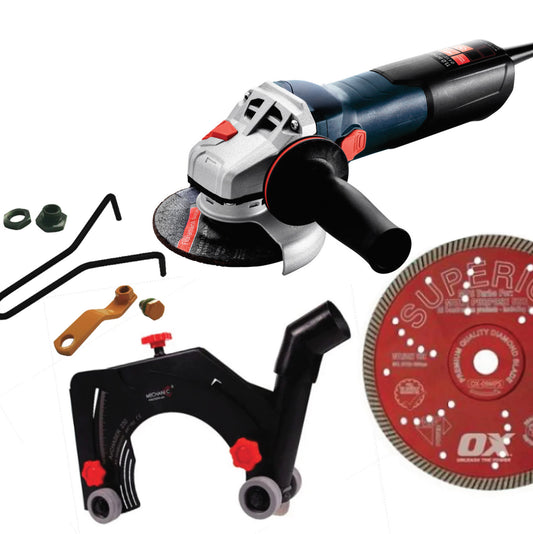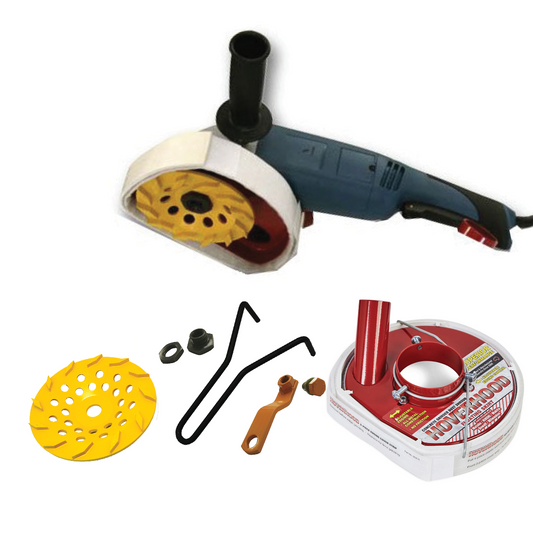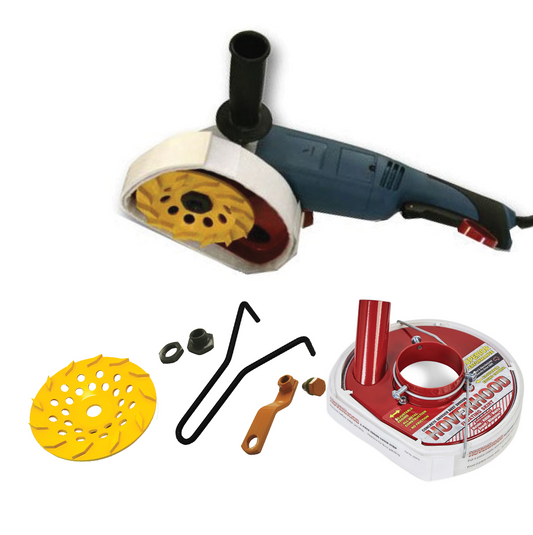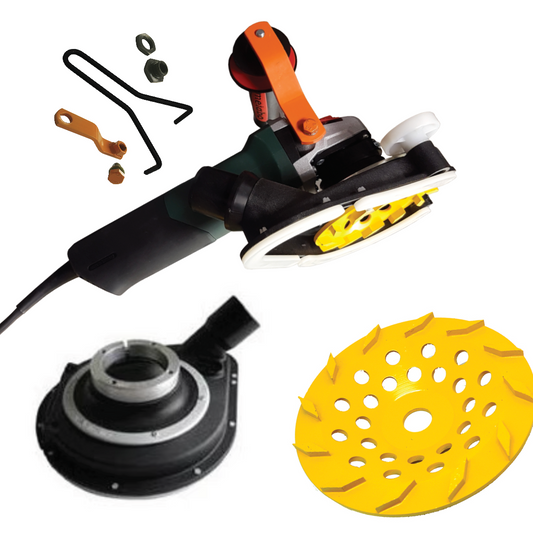WHY CHOOSE SMALLER GRINDERS?
Smaller, handheld machines are ideal for both residential and industrial operations when the workspace is limited. Grinding diameters typically range from 5 to 12 inches, making them excellent for concrete surfaces.
Handheld tools, like walk-behind variants, also come with a variety of disc attachment options. For better dust control on the job, they can be connected to an industrial vacuum.
WHEN TO USE A CONCRETE GRINDER?
Concrete grinders are versatile instruments that you may use for various construction and surface preparation activities such as grinding, polishing, and surface removal. Furthermore, the essential operation is similar whether you use a portable machine or a walk-behind grinder; both pieces of equipment remove material via rotational movement rather than impact. This characteristic results in a smoother finish, which is ideal for surface preparation or polishing, depending on the disc attachment you're using.
CONCRETE GRINDER DISC ATTACHMENTS
The three most common grinding disc attachments you will come across are as follows:
- Silicon-Carbide Grinding Stones
- Tungsten-Carbide Inserts
- Diamond-Segmented Grinding Tools
Choosing which attachment to use depends on the material and finish you wish to achieve. Let’s take a closer look at the functionality of each.
Silicon-Carbide Stones
These grinding wheels come in numerous grits for fine or coarse grinding. These are one of the most cost-effective ways of smoothing out surface imperfections. But their downside comes at the expense of clogging very easily compared to other materials and is not the most efficient for jobs covering a large area. For long-term, large-scale commercial jobs, this can prove time-consuming and frustrating.
Tungsten-Carbide Inserts
While these variants are relatively more expensive than the silicon-carbide ones, they are, however, more efficient and faster at removing surface coatings. These inserts are fitted with carbide-tipped blocks and are designed with bevelled edges, which allow them to strip thicker materials without damaging the concrete underneath. These are mostly used to remove adhesives from surfaces or scrape through multiple layers of resins, tar, and paint.
Diamond-Segmented Abrasives
Profiling work and the removal of thin-film coatings are best done with diamond-segmented abrasives. Fine polishing and the elimination of minor surface flaws are also possible with this more delicate method. The abrasive eventually wears away throughout the grinding process, revealing fresh diamonds beneath. Like the attachments above, diamond-segmented abrasives come in various grit levels, ranging from fine to coarse. To suit the surface you're working on, and you can choose from various bond hardnesses and diamond concentrations.
KNOW YOUR EQUIPMENT’S LIMITATIONS
Hand-held grinders aren't built for vigorous profiling operations, so keep that in mind. Depending on the attachment you employ, some coatings will be impossible to remove with your grinder. Hand-held grinders are best used to remove thin coatings and paints and clean minor surface flaws.


 Store Locator
Store Locator Login
Login
 Cart
Cart























